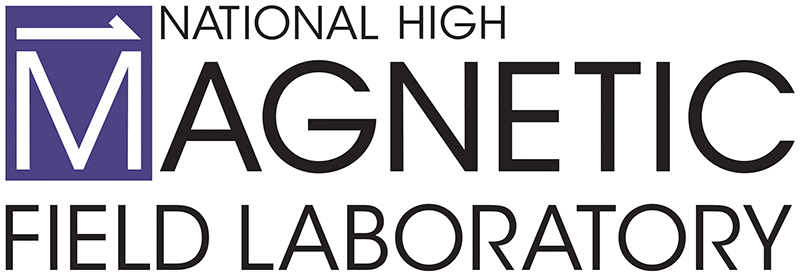Tag: 36-tesla SCH
New instrumentation allows electron magnetic resonance experiments to be performed in the lab’s flagship 36 T Series-Connected Hybrid magnet, unlocking exceptionally high-resolution EMR spectra at the highest magnetic fields.
Metal-organic frameworks (MOFs) are porous materials with high surface areas that can host a variety of different guest molecules, leading to applications in catalysis, drug delivery, chemical separation, fuel cells, and data storage. In order to design better MOFs, knowledge of their molecular-level structures is crucial. At the MagLab, the highest-field NMR spectrometer in the world was used to probe the complex structures of MOFs both "as built" and as they exist when other "guest" molecules are inserted inside the framework.
Measurements performed at the National High Magnetic Field Laboratory provide unique insight into molecular structure of next-generation catalysts for the production of the widely used industrial chemical, propene.
Zeolite catalysts are critical to generating the molecules that provide the building blocks of society’s energy and materials needs. Discerning a clear atomic-level picture of the active sites remains challenging for most current technologies, but here we show that solid-state nuclear magnetic resonance (ssNMR) methods coupled with ultra-high magnetic field instruments, can and has provided extremely useful information for catalyst development.
Chemists are rarely able to use oxygen NMR to determine molecular structures, since 17O is an extremely challenging nucleus to observe. This work provides a mechanism for obtaining a complete set of 17O NMR parameters for a glucose molecule, paving the way for researchers to consider 17O NMR as a new spectroscopic tool.
Rhodium (Rh) is one of the most costly and scarce platinum group elements; however, it is of great importance in many technologies including catalytic converters, electronics, and medical devices. Here ultra-high magnetic field instruments and new NMR methodology at the MagLab unlocked access to perform 103Rh solid-state nuclear magnetic resonance, a technique that can study the molecular structures of Rh-containing materials.
Solid oxide fuel cells generate clean energy by oxidizing green fuels like hydrogen and reducing atmospheric oxygen, without recharging or emissions that contribute to climate change. They use a fast ion conductor electrolyte to move oxygen ions between electrodes, converting chemical energy to power. Our research uses 71Ga solid-state NMR spectroscopy on the highest-field magnet in the world to study the numbers of oxygen ions near gallium atoms – this will inform the design of better electrolyte materials for fuel cells.
Researchers used a powerful 36 Tesla magnet at MagLab to study the atomic structure of porous materials (MOFs) with bismuth and iodine NMR, aiding the design of advanced materials for drug delivery, catalysis, clean energy, and more.
Combining tremendous strength with a high-quality field, the MagLab’s newest instrument promises big advances in interdisciplinary research.
As head of nuclear magnetic resonance at the MagLab's Tallahassee headquarters, Rob Schurko hopes to expand capabilities and build new magnets.
New insights challenge current understanding of how ion transport through some cell membranes works.
Improving technology for research of biomolecules and advancing our understanding of health and disease.
MagLab NMR Facility Director Rob Schurko was awarded the Vold Prize for his contributions to the field of solid-state NMR over the past 25 years.
MagLab researchers are working to investigate platinum group metals using the world’s most powerful Nuclear Magnetic Resonance systems.
MagLab researcher Zhehong Gan has been named 2025 recipient of the Gunther Laukien prize for developing advanced techniques to study complex materials using nuclear magnetic resonance.
Rob Schurko has been director of the lab’s nuclear magnetic resonance team since 2020 and is a leading authority on solid-state NMR.
What is homogeneity and why is it so important to scientists? Learn how homogeneous magnets make data clearer by milking the magnetic field strength for all it's worth.
Two MagLab teams tried marrying vastly different technologies to build a new type of magnet: the Series Connected Hybrid. Decades later, has the oddball pairing panned out?
More Tags
- Biology
- Biochemistry
- Chemistry
- Cryogenics
- Dynamic nuclear polarization
- Energy research
- Engineering
- Environment
- Geochemistry
- Health research
- Life research
- Magnet technology
- Mass spectrometry
- Materials research
- NMR and MRI
- Physics
- Postdocs and grad students
- Quantum computing
- Science & Art
- Semiconductors
- STEM education
- Superconductivity
- Universe
- 100-tesla multi-shot magnet
- 32-tesla superconducting magnet
- 45-tesla hybrid magnet
- 900MHz magnet
- 36-tesla SCH
- 25-tesla split magnet
- 41-tesla resistive magnet
- 21-tesla ICR magnet
- 600 MHz 89 mm MAS DNP System


